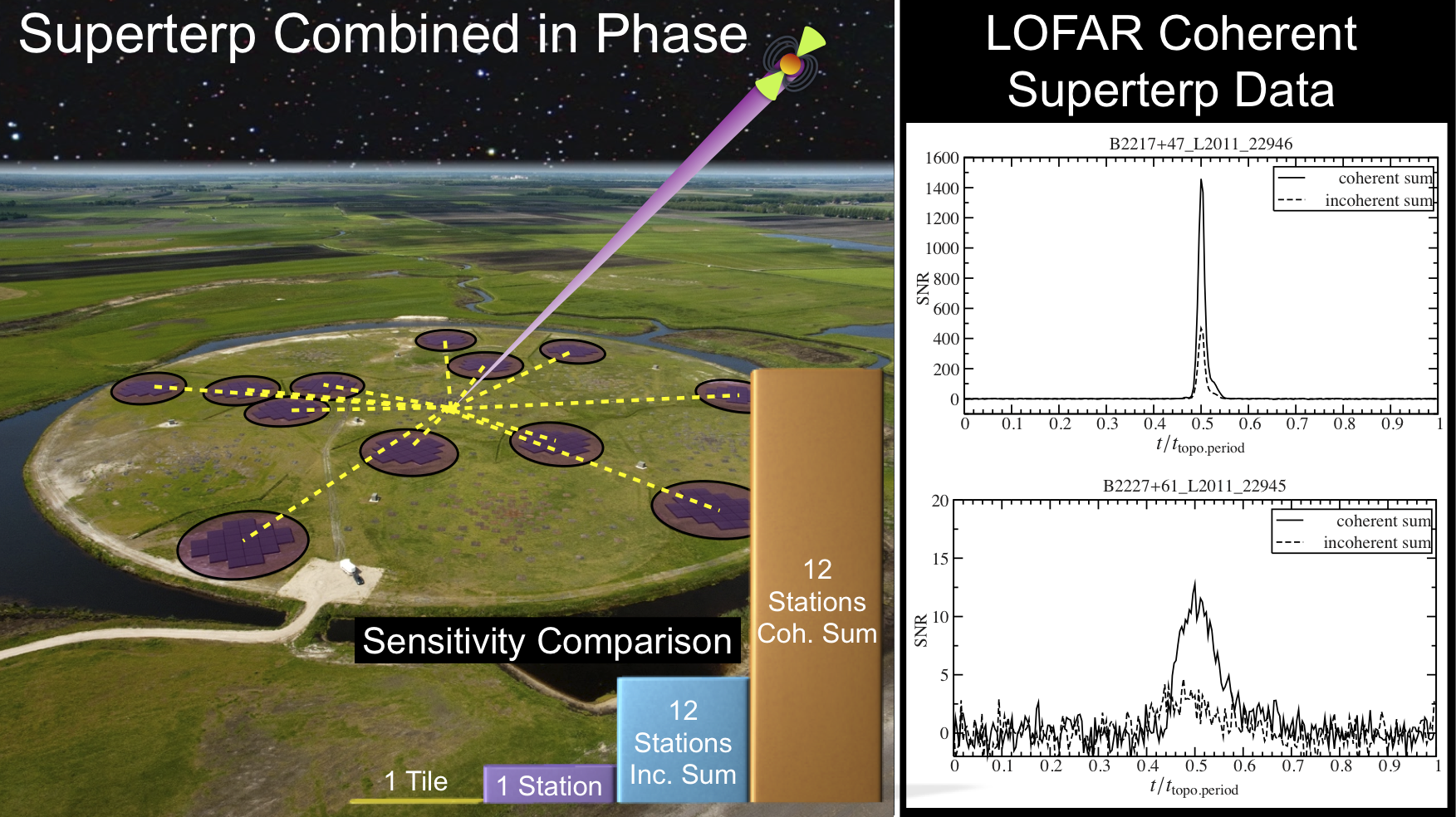Daily Image
07-02-2011First LOFAR Tied-Array Beam Achieved
| Submitter: | The LOFAR Pulsar Working Group and |
| Description: | Adding the LOFAR station beams in phase, or "coherently", is vital to achieving the maximum possible raw sensitivity for beam-formed observations of e.g. pulsars, planets, and cosmic rays. The coherent combination of multiple station beams is called a "tied-array" beam and is shown schematically in the diagram above. Ideally, the sensitivity of coherently combined stations should increase by the square-root of the number of stations compared with the incoherent station sum (as shown in the bar graph above). In order to combine the station signals in phase for a given direction on the sky, the difference in light travel time from that source to the final addition should be sub-nanosecond, for each station. This calibration has now been achieved for the 12 HBA sub-stations (24 HBA tiles) on the so-called LOFAR "Superterp". These sub-stations now share a common clock signal, which greatly simplifies the calibration. Remaining cable delays are corrected with a calibration table applied by the BG/P correlator. To demonstrate that we are now forming true tied-array beams, we simultaneously recorded both the incoherent and coherent sum of the Superterp sub-stations. The comparison is shown for both the bright pulsar B2217+47 and the significantly weaker pulsar B2227+61. In both cases, the resulting signal-to-noise ratio of the detection increases by a factor very close to the square-root of 12, as expected. The introduction of the single clock has enabled this large step in sensitivity, for the first time approaching to within a factor of a few the maximum possible sensitivity that will ultimately be achievable with the full LOFAR core. The next step is to form tied-array beams which include core stations outside the Superterp region and to apply the phase calibration in near real-time, in order to also calibrate differential ionospheric delays between the stations. |
| Copyright: | ASTRON |
| Tweet |  |
